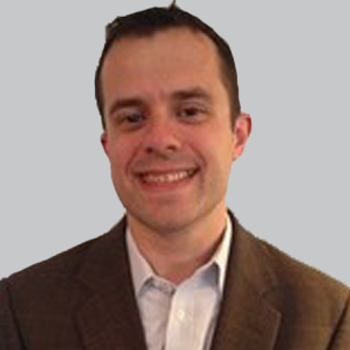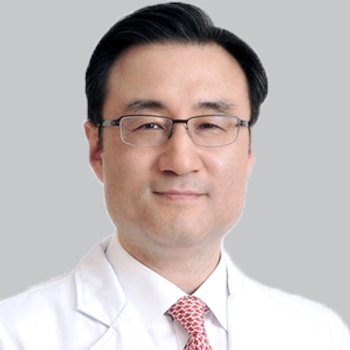
Music Therapy Unites the Arts and Medicine to Help Patients
Two medical students who are conservatory-trained musicians describe a memorable performance at a center for older adults with dementia.
Each year the Indiana University (IU)
Our passion for combining our love of music with patient care started during our time at IU while we were working on our degrees in music performance. The two of us would organize musical performances/activities for individuals recovering from traumatic brain injuries and
A memorable performance
Since the inception of the Musical Outreach Committee, we have provided music as therapy for individuals at Brenner’s Children’s Hospital, the Comprehensive Cancer Center, and the Sticht Center on Aging, as well as in substance abuse group therapy programs. One of our most memorable performances was at a local care center for patients with dementia. Some of our most enthusiastic audience members were those who were severely cognitively impaired. Many of them could not recognize their family or friends, and nearly half of the patients were uncommunicative, only saying but a few words. As we worked to engage the individuals in attendance, we began to play the tune “You Are My Sunshine,” a song written in 1939, and a top hit at that time.
As the melody unfolded, more and more voices could be heard joining us in song. Eventually, some patients formed an impromptu women’s choir in one corner, and a group of men formed a barbershop quintet in the other, all singing together in beautiful harmony. The transformation in these patients was astounding. Several patients who were previously slumped in their chairs were able to sit up, stand, and walk to where we were seated. One of them gave us a big hug, and another an enthusiastic standing ovation while waiting eagerly for the next number. As the day went on, patients with dementia would laugh, cry, and dance as they joined our ensemble. We took as many requests as we could, which was always a highlight.
It was as if music was an instant intervention-one that could rekindle something inside the listener and make them feel young again. We could imagine 81-year-old Ms A., a retired nurse, dancing in her bright-colored A-line skirt, red peep-toe heels, a beret, and powdered face with red lipstick. We could imagine 88-year-old Mr R, a former schoolteacher, in knit brown dress slacks, a trench coat, wide-brimmed hat, and a Lucky Strike cigarette in his hand. It was as if music was their time machine, bringing them back to some of the best days of their lives.
“This song was played at our wedding, do you remember?” said Ms. A as she looked fondly at her husband of 55 years. “I swooned your mother with my dancing to this song at the high school dance . . .,” said Mr. R. His daughter started crying tears of joy as she witnessed her father regain his old charm.
Music as adjunctive therapy
The idea that music can be used as a form of therapy is certainly nothing new. In the US, the profession of music therapy found its roots in serving wounded veterans in World War II. It was, in fact, the US Army that conducted one of the initial studies on the use of music in rehabilitation in 1945. It was around that time that music therapy was first offered as a degree program-now more than 80 approved college and university programs in the US offer degrees in music therapy.
In an era in which medical professionals are increasingly focused on developing creative multimodal approaches to patient care, there has been great interest in harnessing the power that music has to heal those in need. In the past few years, the Cochrane Review has published numerous reviews highlighting the effects of music therapy on patients with depression, stress, anxiety,
While music therapy has never been a more popular field, resources such as UpToDate currently list the dearth of adequately trained therapists as the limiting factor in the efficacy of music therapy. We aim to work through the WFSOM Musical Outreach Committee to increase appreciation for music as adjunctive therapy, and to encourage greater incorporation of formally trained music therapists into medical centers throughout the nation.
As we move forward in our careers as physicians, we hope to apply our experience using music as therapy to enrich our ability to care for patients. Formalized music therapy sits at the intersection of art and science, and we hope to influence others who have previously dedicated their lives to the arts to explore ways in which they can lend their unique skills to the world of medicine.
As the poet Henry Wadsworth Longfellow once stated, “Music is the universal language of mankind,” and we certainly could not agree more. We hope to be part of a new generation of physicians who can unite the arts and sciences and thereby create better outcomes for all patients.
About the authorsEsther Kim has obtained diplomas and degrees in violin performance from the Juilliard School of Music, University of Music and Performing Arts in Vienna, Austria, and the Indiana University Jacobs School of Music. She is an MD candidate at the Wake Forest School of Medicine in NC, hoping to specialize in psychiatry.
Joseph Kaizer, DMA, has obtained degrees in cello performance from the University of Illinois and Northwestern University and completed his doctoral degree in cello performance and music history at the Indiana University Jacobs School of Music. He is an MD candidate at the Wake Forest School of Medicine in NC, hoping to specialize in psychiatry.
Newsletter
Keep your finger on the pulse of neurology—subscribe to NeurologyLive for expert interviews, new data, and breakthrough treatment updates.


































